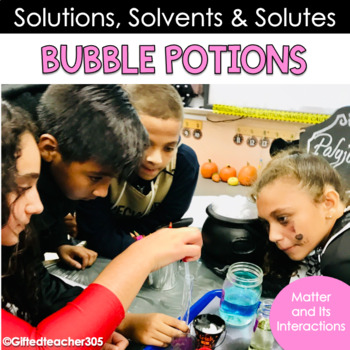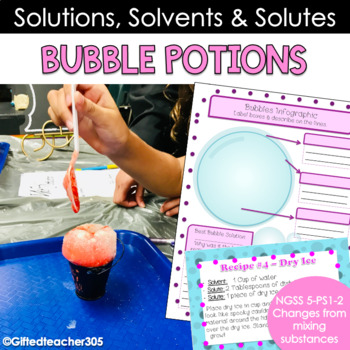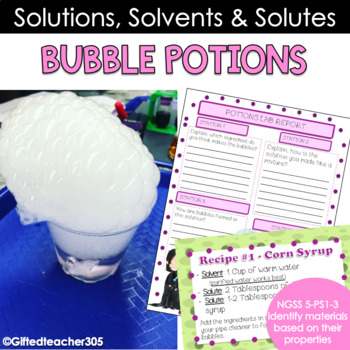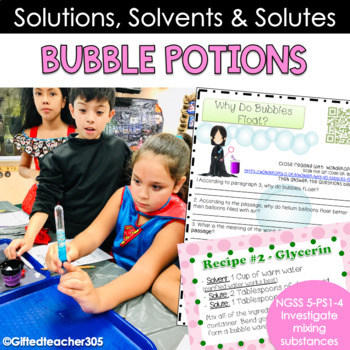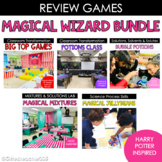Mixtures and Solutions Lab: Bubble Potions
- PDF
- Internet Activities
What educators are saying
Also included in
- Do your kids love Harry Potter and all things magic and wizards? Then this Magical Wizard bundle inspired by the Harry Potter with its magical elements is the answer to most of your classroom needs. Your students will love magical growth mindset, wizard math stations, testing motivation, classroom mPrice $35.50Original Price $71.00Save $35.50
Description
This mixtures and solutions lab will get your kids excited about 5th grade chemistry! Bubble Potions is a fun and magical science lab where students will be able to discuss the physical properties of matter; distinguish between mixtures and solutions and understand the difference between a solute and a solvent. You can turn this into a magical classroom transformation where students are wizards learning potions!
This resource includes 3 student lab experiments and 1 teacher-led demonstration. There are some supplies that are required but they can be found in your local stores. First, students will read two passages and complete some short answer questions, then they will complete the lab stations, and finally write a wizard report (a short essay).
What is included?
- Four lab activities to learn about making and observing solutions, and to help identify solutes and solvents
- One infographic fill-in page on the composition of a bubble
- A student lab report for the bubble potions
- Two close reading passages with Common Core State Standards (CCSS) aligned text-dependent questions good for 3-6 grades. Reading passages accessible through www.wonderopolis.com by scanning the QR code or going to the link provided
- Station tent signs
- Teacher Answer key to the close reading passage text-dependent questions, and instructions for each lab activity
- Writing prompt
If you like this activity check out these transformations that will amaze your students:
•STEAM Wars Classroom Transformation
•The Nutcracker Classroom Transformation
•Wizard Academy Classroom Theme
•Pokémon Classroom Transformation
Don't forget to follow me to be notified of the latest updates, new products, and sales!

